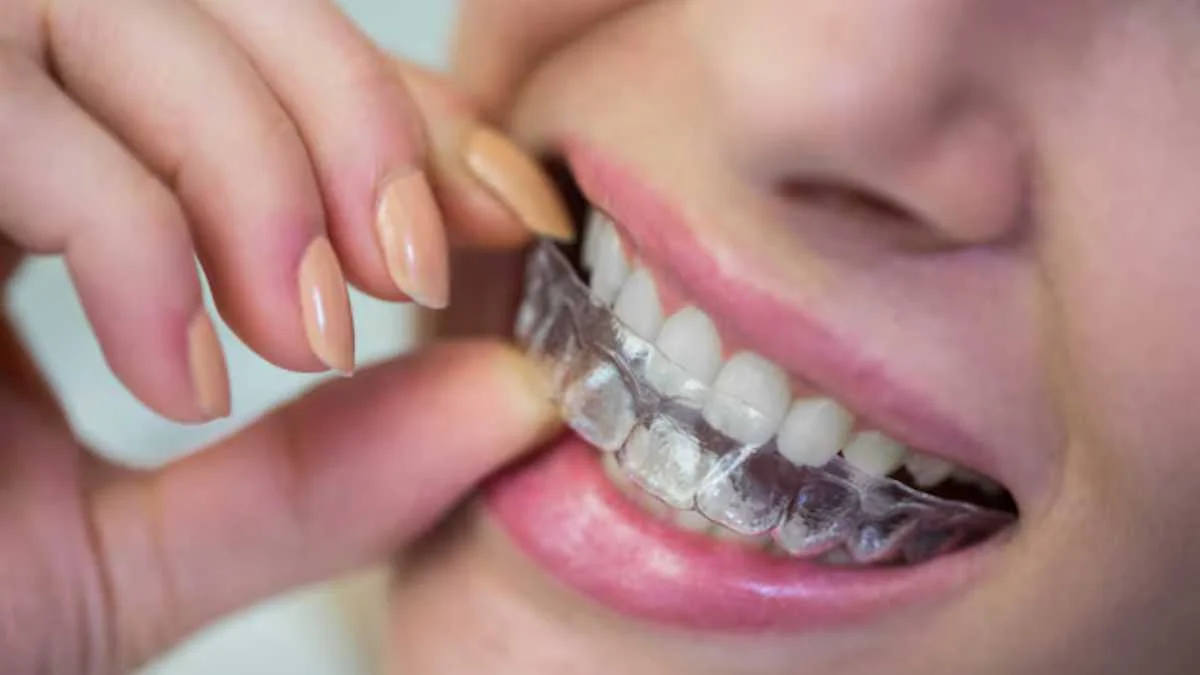HEALTH AND FITNESS
The Role of Invisalign in Correcting Bite Issues and Jaw Health

A well-aligned smile is more than just aesthetically pleasing—it plays a vital role in oral health and overall well-being. When teeth are misaligned or the bite is not properly positioned, it can lead to discomfort, uneven wear on teeth, and even jaw pain. Traditional braces have long been the go-to solution for correcting bite issues, but advancements in orthodontics have introduced a more discreet and comfortable option: Invisalign.
Unlike metal braces, Invisalign offers a nearly invisible way to shift teeth into better alignment. While many people choose clear aligners for cosmetic reasons, they also provide significant health benefits by correcting bite problems and improving jaw function. Proper alignment reduces strain on the jaw muscles and helps prevent long-term dental complications.
Understanding how Invisalign works and its impact on oral health can help individuals make informed decisions about their treatment. By addressing bite issues early, patients can enjoy both a healthier smile and improved jaw comfort for years to come.
Table of Contents
Common Bite Issues and Their Impact on Jaw Health
Bite alignment affects everything from chewing efficiency to speech clarity. When the teeth do not fit together correctly, it can cause a range of oral health problems.
1. Overbite
An overbite occurs when the upper front teeth overlap excessively over the lower teeth. While a slight overbite is normal, a severe one can lead to:
- Increased wear on the lower teeth
- Jaw pain and tension
- Difficulty closing the lips comfortably
2. Underbite
An underbite happens when the lower teeth extend beyond the upper teeth. This condition can cause:
- Difficulty chewing certain foods
- Excessive stress on the jaw joint
- Higher risk of chipping or breaking teeth
3. Crossbite
A crossbite occurs when some upper teeth sit inside the lower teeth instead of overlapping them. If left untreated, it can result in:
- Uneven tooth wear
- Gum recession due to improper bite pressure
- Jaw misalignment and chronic pain
4. Open Bite
An open bite means that when the mouth is closed, the upper and lower teeth do not make contact. This can lead to:
- Speech difficulties, including lisping
- Problems biting into foods like apples or sandwiches
- Increased pressure on the back teeth, leading to wear and sensitivity
5. Crowding and Spacing Issues
Teeth that are too close together or too far apart can disrupt bite function. Crowding makes cleaning between teeth difficult, increasing the risk of cavities and gum disease, while spacing issues can cause bite misalignment and instability.
How Invisalign Helps Correct Bite Problems
Unlike traditional braces, which rely on metal brackets and wires, Invisalign uses custom-made clear aligners to gradually shift teeth into better alignment. These aligners are changed every one to two weeks to encourage continuous movement.
1. Gradual, Controlled Tooth Movement
Each set of Invisalign aligners applies gentle pressure to specific teeth, guiding them into their ideal position over time. This precise movement allows for targeted corrections without the discomfort of metal adjustments.
2. Improving Jaw Alignment
By addressing bite issues, Invisalign helps balance pressure across the jaw, reducing the likelihood of strain-related problems such as temporomandibular joint (TMJ) disorders. Patients often experience relief from chronic jaw pain, headaches, and tension once their bite is properly aligned.
3. Reducing Tooth Wear and Damage
Misaligned teeth often cause uneven wear, leading to chipped or weakened enamel. Invisalign promotes even distribution of bite force, protecting teeth from unnecessary damage.
4. Enhancing Oral Hygiene
Because Invisalign aligners are removable, patients can brush and floss normally, reducing the risk of plaque buildup and gum disease—issues that are more common with traditional braces.
The Benefits of Choosing Invisalign Over Traditional Braces
Many people hesitate to seek orthodontic treatment due to concerns about discomfort and appearance. Invisalign provides a solution that is both effective and discreet.
1. Comfort and Convenience
Invisalign aligners are made from smooth, flexible plastic, eliminating the irritation caused by metal wires and brackets. They can be removed for eating, brushing, and special occasions, making daily life more comfortable.
2. Shorter Treatment Time for Many Cases
While treatment length varies, some Invisalign patients achieve results in as little as six months, depending on the complexity of their case. This is often shorter than traditional braces, which can require two or more years for full alignment.
3. Fewer Dental Visits
With Invisalign, there is no need for frequent tightening appointments. Patients typically visit their dentist every six to eight weeks to monitor progress, making it a convenient option for busy individuals.
4. No Dietary Restrictions
Unlike braces, which require patients to avoid sticky and hard foods, Invisalign aligners can be removed before eating, allowing patients to continue enjoying their favorite meals.
What to Expect During Invisalign Treatment
For those considering Invisalign, understanding the treatment process can help set realistic expectations.
1. Initial Consultation
A dentist evaluates the patient’s bite, takes digital scans, and creates a personalized treatment plan.
2. Custom Aligner Fabrication
Using advanced technology, a series of aligners is designed to gradually move teeth into proper alignment.
3. Wearing the Aligners
Patients wear each set of aligners for 20-22 hours per day, changing them every one to two weeks as directed.
4. Monitoring Progress
Regular checkups ensure the teeth are moving according to plan. Adjustments may be made as needed to optimize results.
5. Retainer Use After Treatment
Once Invisalign treatment is complete, wearing a retainer helps maintain the new alignment and prevents teeth from shifting back.
Maintaining Jaw and Bite Health After Invisalign
Once bite alignment has been corrected, maintaining long-term oral health is essential.
1. Continue Wearing a Retainer
Wearing a retainer as prescribed prevents teeth from shifting back to their original position.
2. Practice Good Oral Hygiene
Regular brushing, flossing, and professional cleanings help keep teeth and gums healthy.
3. Be Mindful of Jaw Tension
Reducing stress, avoiding excessive gum chewing, and practicing good posture can help prevent strain on the jaw muscles.
4. Visit a Dentist Regularly
Routine dental visits ensure that teeth and jaw alignment remain stable over time. Nations Dental Studio provides professional dental care for maintaining long-term bite health.
Conclusion
Invisalign is more than just a cosmetic solution—it plays a critical role in correcting bite issues and promoting long-term oral health. By addressing problems like overbites, underbites, and crossbites, Invisalign improves chewing function, reduces jaw pain, and helps prevent uneven tooth wear.
For those looking for a comfortable and discreet way to achieve a healthier smile, Invisalign offers an effective alternative to traditional braces. With the right treatment plan and proper post-care, patients can enjoy a well-aligned smile that enhances both appearance and function.
-

 GENERAL2 months ago
GENERAL2 months agoUncovering the World of кинокрадко: The Dark Side of Film Piracy
-

 GENERAL1 month ago
GENERAL1 month agoUnveiling the Art of преводсч: How Translators Bridge Language Barriers
-

 YOGA1 year ago
YOGA1 year ago4 Person Yoga Poses for Beginners
-

 GENERAL2 months ago
GENERAL2 months agoThe Journey of iamnobody89757: From Anonymous User to Internet Sensation


























